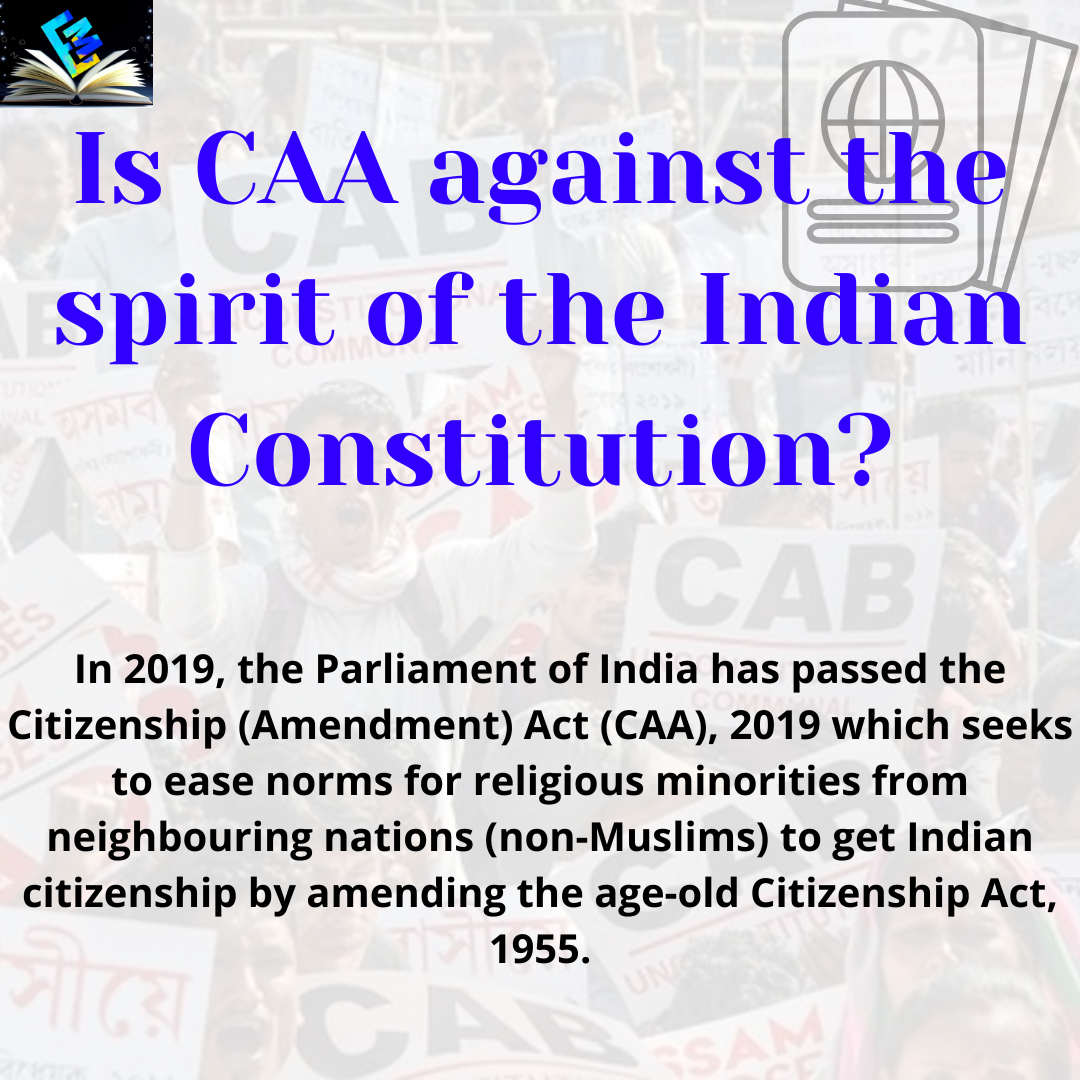
Is CAA against the spirit of the Indian Constitution? | Citizenship Bill
Citizenship (Amendment) Act (CAA), 2019
AUTHOR : AKSHU RANA
In 2019, the Parliament of India has passed the Citizenship (Amendment) Act (CAA), 2019 which seeks to ease norms for religious minorities from neighboring nations (non-Muslims) to get Indian citizenship by amending the age-old Citizenship Act, 1955. So, it has polarized regions in border states such as Assam since the locals fear that it will result in demographic change due to immigration.
What are the key features of the Citizenship Act, 1955?
In India, the Citizenship Act, 1955 prescribes 5 ways to acquire citizenship via – Birth, Descent, Registration, Naturalization & Incorporation of the territory.
Who is a citizen?
A person born outside India on or after January 26, 1950, but before December 10, 1992, is a citizen of India if his/her father was a citizen of India at the time of his/her birth.
Who is an illegal immigrant?
- An illegal immigrant refers to the person who enters India without a valid passport or stays in the country after the expiry of the visa permit.
- An immigrant who uses false documents for the immigration process is also an illegal immigrant.
- (In short, illegal immigrants of Hindu, Sikh, Buddhist, Jain, Parsi or Christian religious communities from Afghanistan, Bangladesh or Pakistan will be imprisoned or deported.)
Who is not a citizen?
- Under Article 9 of the Indian constitution, a person who voluntarily acquires citizenship of any other country is no longer an Indian citizen.
- From December 3, 2004, onwards, persons born outside of India shall not be considered citizens of India except their birth is registered at an Indian consulate within 1 year of the date of birth.
- If an adult makes a declaration of renunciation of Indian Citizenship, then he loses Indian citizenship.
Citizenship by naturalization
Under The Citizenship Act, 1955, one of the requirements for citizenship by naturalization is that the applicant must have resided in India during the last 12 months, as well as for 11 of the previous 14 years.
What are the key features of the CAA, 2019?
- It proposes that non-Muslim communities such as Hindus, Sikhs, Buddhists, Jains, Parsis, and Christians from Afghanistan, Bangladesh, and Pakistan, who entered India on or before December 31, 2014, will not be treated as illegal immigrants even when they have entered India without valid documents.
- It seeks to include a separate column in the citizenship form for applicants belonging to these 6 communities from those 3 countries.
- They will not be deported as illegal immigrants under the Passport (Entry into India) Act of 1920 and the Foreigners Act of 1946.
- Citizenship will be granted by relaxing the requirement of residence in India for citizenship by naturalization from 11 years to 5 years for these migrants.
- Here some Exceptions are : The provisions on citizenship for illegal migrants will not apply to two categories – states protected by the ‘Inner Line’, and areas covered under the sixth schedule of the Constitution.
- While addressing the rights of Chakma refugees, the Supreme Court in the NHRC vs. State of Arunachal Pradesh case provided equal protection before the law and rights under Article 21 (Right to life) to all immigrants including those who are considered as illegal.
- With the passage of this legislation, then by means of naturalization, these persecuted immigrants would be entitled to enjoy the benefits of rights guaranteed under the constitution of India, including equality, free of speech and expression, life, vote, work, food, etc.
- Hence, the law should not limit itself to minorities from Afghanistan, Pakistan, and Bangladesh, but also include refugees from persecuted minorities of all religions who have made India their home.
FOR MORE INFORMATION VISIT OUR SITE






